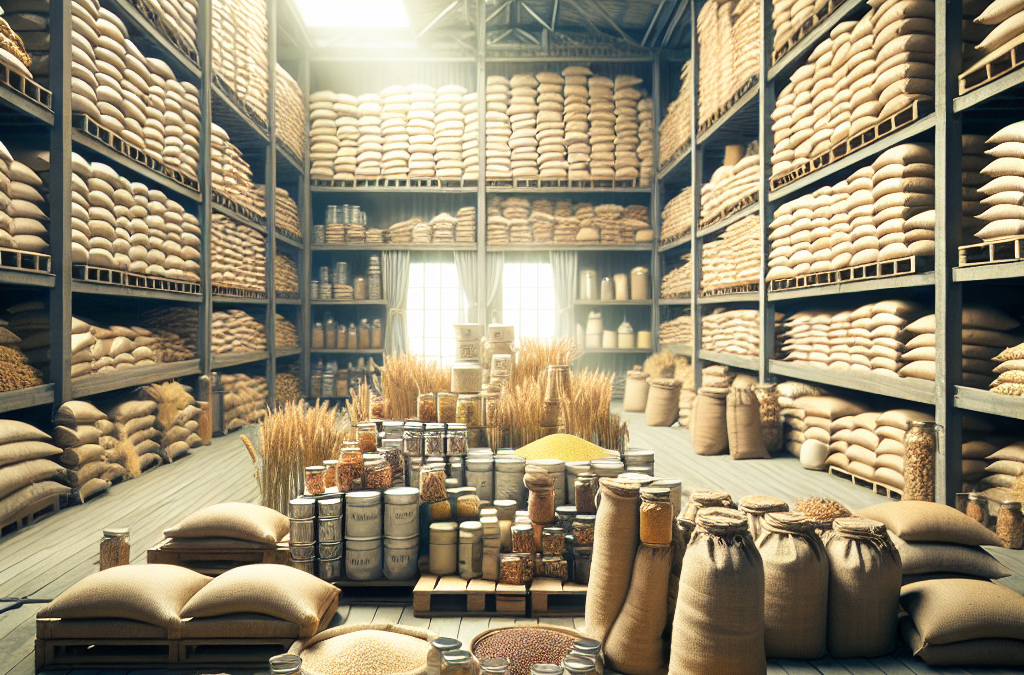Understanding the Need for Emergency Grain Storage
Why Prepare?
Let’s be real; life can throw some pretty unexpected curveballs. Whether it’s a natural disaster, economic downturn, or just a sudden bump in the road, being prepared with emergency grain storage gives me peace of mind. It’s not just about stockpiling; it’s a proactive way to ensure I have food security no matter what happens.
Having a good supply of grain can mean the difference between worrying about your next meal and feeling secure. Grains like rice, wheat, and oats not only have decent shelf lives but are also nutritional powerhouses. They can serve as the foundation for countless meals.
So, when I think about emergency grain storage, I see it as not only a practical measure but also a way to take charge of my household and my family’s security. After all, being ready for anything is something we all should strive for!
Choosing the Right Grains
Varieties of Grains
When selecting grains for storage, I like to consider a variety of types. Rice and wheat are staples, but let’s not forget about quinoa, barley, and oats. Each grain has unique benefits and flavors, which can transform an ordinary meal into something special.
For instance, brown rice offers more nutrients compared to white rice, while quinoa is a complete protein, making it an awesome choice if you’re looking for healthy storage options. I often mix different grains in my storage for not only taste but also a nutritional balance.
Finding the right grains isn’t just about stocking up; it’s also about what you and your family enjoy. When I first started my emergency grain storage, I made the mistake of prioritizing shelf life over what we actually liked, and trust me, it wasn’t the most fun experience come mealtime!
Proper Storage Techniques
Storage Containers
Once I’ve chosen the right grains, the next step is figuring out how to store them properly. Trust me, using the right containers can make all the difference. I find that food-grade buckets with airtight lids work wonders. They keep pests and moisture at bay, which is crucial for extended storage.
For smaller amounts, glass jars are another fantastic option. Not only are they cute and reusable, but they also allow me to see what’s inside! I label everything with the date of purchase and type of grain, so I can keep track of what I have and its freshness.
It’s essential to consider the environment as well. A cool, dark place is ideal for grain storage. I always avoid tying up valuable kitchen space and head for the basement or a dedicated storage closet when I can.
Monitoring Your Stock
Regular Checks
Now, here’s the thing: just because I have a stockpile doesn’t mean I can forget about it for years. Regular checks are a must! I typically do a deep dive into my storage every six months to ensure everything’s still in good shape. It helps me keep track of what grain I’ve used and what I need to replenish.
Get Whole Wheat Flour, Grains and Milling Supplies – CLICK HERE
During these checks, I look for signs of pests or spoilage. Keeping an eye on the condition helps me avoid any nasty surprises later. Trust me, there’s nothing worse than finding bugs in your carefully stored grains.
Also, I try to rotate my stock by using the oldest grains first. It’s a simple strategy that saves me money and keeps my meals fresh, and who doesn’t want that?
Cooking with Stored Grains
Recipe Ideas
The fun part about having all these grains ready for storage is getting to cook with them! Developing some go-to recipes is crucial for making the most out of my stockpile. I love experimenting with different grains in salads, soups, and even baked goods.
For instance, using quinoa in a salad makes it a filling dish packed with nutrients. I mix it with veggies, dress it lightly, and boom! A perfect meal that utilizes what I have stored. It feels good knowing that I’m not just hoarding grains but actually cooking with them.
Another favorite is making homemade granola with oats. I toss in some honey, nuts, and dried fruits, and I have an awesome breakfast. It’s a great way to sneak those stored grains into our daily meals without much fuss.
FAQs
1. Why is grain storage important?
Grain storage is crucial for ensuring food security during unexpected situations, such as natural disasters or economic hardships. It provides a reliable source of nutrition when other food supplies may be disrupted.
2. What types of grains should I store?
It’s best to store a variety of grains including rice, wheat, oats, and quinoa. Each type has unique benefits and can be used in different recipes, which helps prevent boredom in emergency meals.
3. How long can grains be stored?
Depending on the type and storage conditions, grains can last anywhere from a few months to several years. For example, properly stored white rice can last up to 30 years, while whole wheat flour is best used within a year.
4. What containers should I use for storage?
Food-grade buckets with airtight lids are ideal for larger quantities, while glass jars are great for smaller amounts. It’s important to keep them in a cool, dry place to maximize their shelf life.
5. How often should I check my grain storage?
It’s a good idea to check your grain storage every six months. Regular monitoring will help you catch any spoilage or pest issues before they become serious.
Get Whole Wheat Flour, Grains and Milling Supplies – CLICK HERE
Related Content
Auto Amazon Links: No products found.





